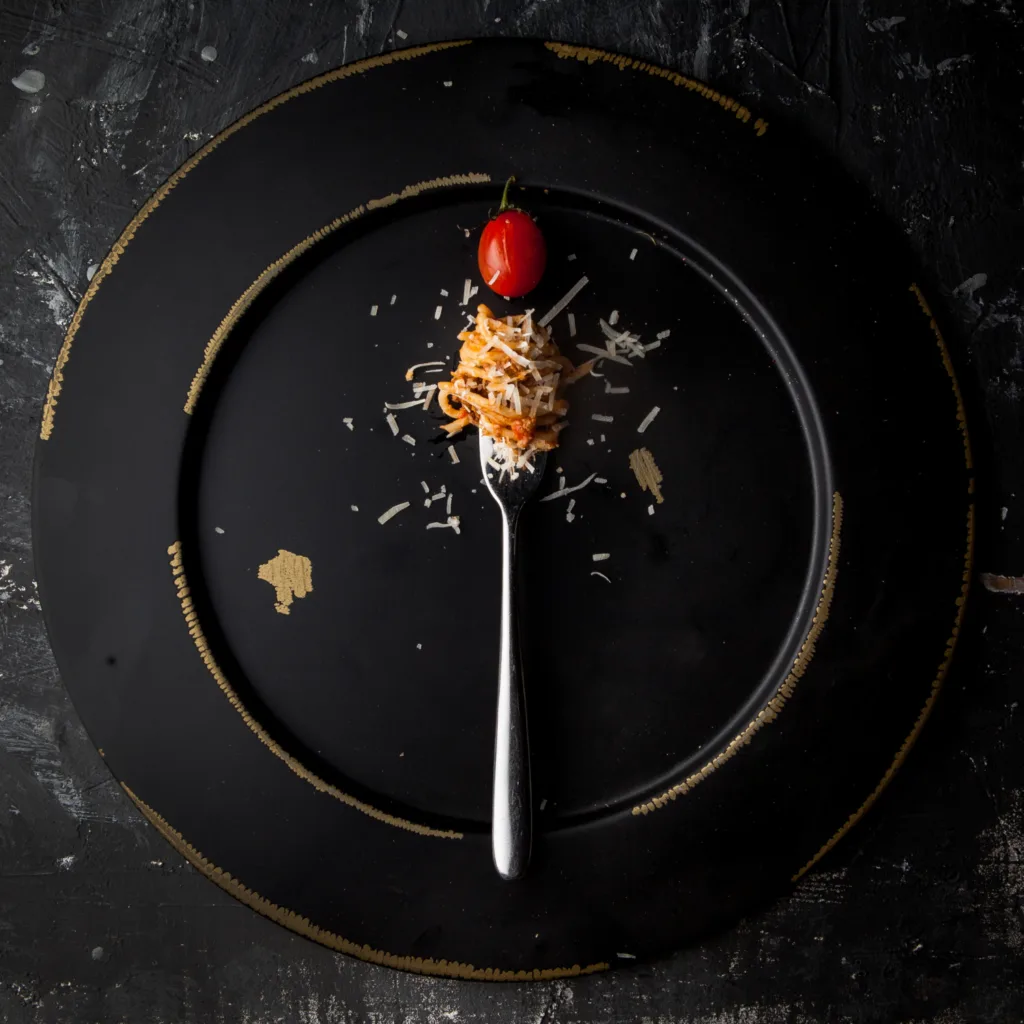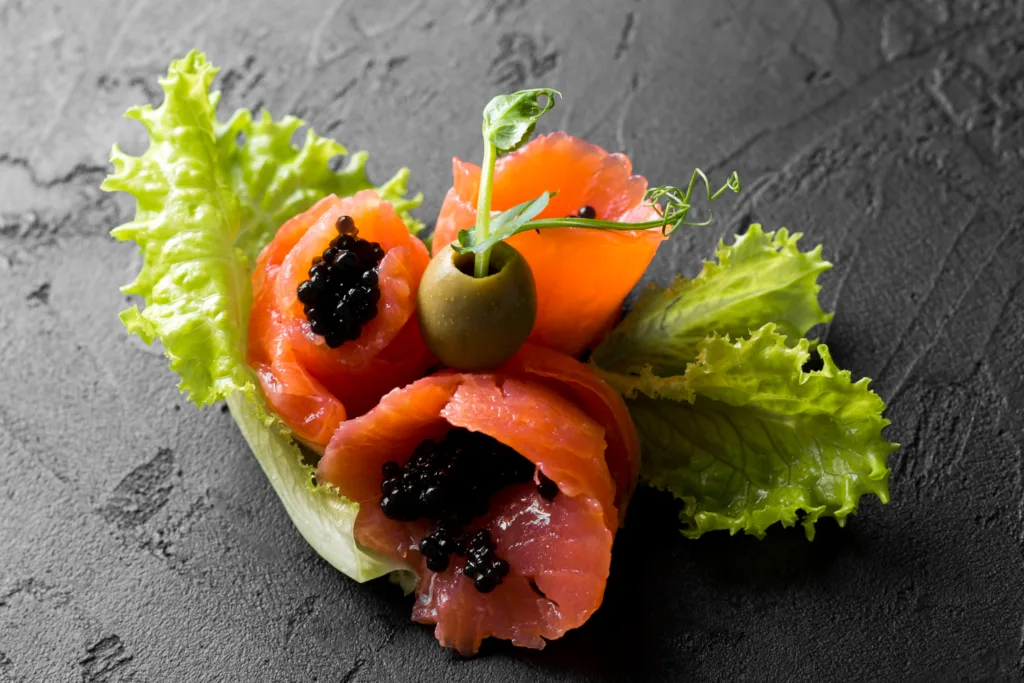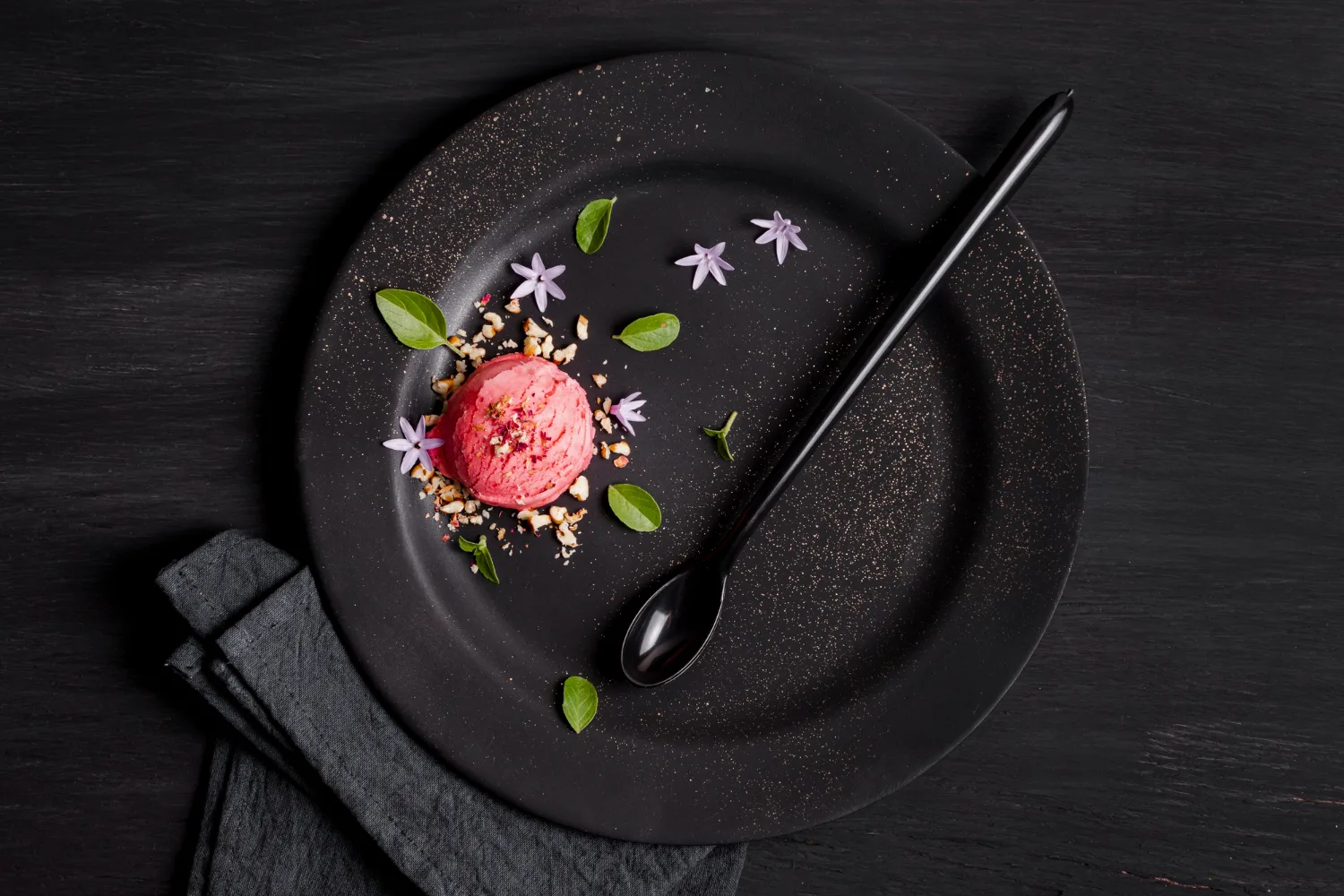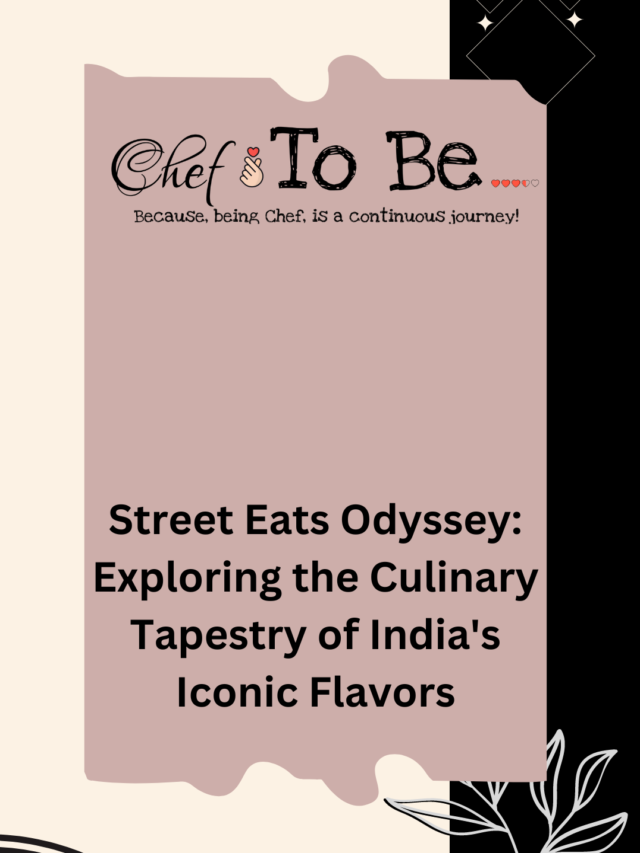The Vitals of Garnishing Mastery:
Gastronomy is a symphony of flavors, and garnishing is the crescendo—a harmonic balance of taste, texture, and visual appeal. As we go over the culinary landscape, we discover that garnishing is more than just an adornment; it is a profound statement of creativity and skill. In this journey, we will discover the complexities of garnishing mastery and the magical world of food artistry.
Hello readers! Welcome back to Chef To Be, if you’re new to here, please check out my most recent post and provide feedback in the comments section. Also, as this is an in-depth article, for ease of navigation, I’ve highlighted the key points for discussion. Now, without any delay, let’s delve into the specific topics we’ll be exploring in this post:
Key Points:
- Introduction
- An Artistic Symphony in Culinary Creation
- Flavors as Notes
- Visual Aesthetics as Artistic Expression
- Culinary Narratives
- The Symphony of Edible Art- A Masterpiece in Taste, Texture, and Precision
- Colors and Contrasts – The Artistic Palette
- Texture Play – A Culinary Dance of Sensations
- Precision and Detail – Crafting Culinary Artistry
- Exploring the Canvas – The Diverse Palette of Edible Arts in Culinary
- Vegetable Carving – Sculpting Nature’s Bounty
- Plate Painting – The Canvas of Gastronomy
- Herb Infusions – A Symphony of Fragrance and Flavor
- A Culinary Masterpiece -Crafting an Edible Flower Salad
- Ingredients for the Edible Flower Salad
- Instructions – A Choreography of Flavors and Presentation
- Frequently Asked Questions (FAQs)
- How can I choose the right herbs for garnishing various dishes?
- Any tips for incorporating garnishing into my busy cooking routine?
- What tools can enhance my garnishing skills?
- How can I garnish desserts effectively?
- What should I be cautious about when garnishing dishes?
- Conclusion
- Embracing the Culinary Canvas
- The Culinary Storytelling
- A Testament to Culinary Artistry
- Gastronomy as an Artistic Canvas
Introduction:
Garnishing skill goes beyond the functional components of culinary decoration; it embodies the essence of changing a dish into a canvas for the chef’s unbridled creativity. Garnishing skill is defined as the ability to arrange a symphony of flavors, textures, and visual aspects that deeply resonate with diners.
Picture a plate to be a blank canvas ready for an artist to add his or her touch, with each element acting as a brushstroke in the overall composition. The core of garnishing skill is the seamless blending of these ingredients to produce an experience that transcends plain nutrition and becomes a celebration of gastronomical artistry.
An Artistic Symphony in Culinary Creation:
Flavors as Notes:
Garnishing skill entails treating flavors like musical notes in a composition. Each ingredient is carefully picked not only for its taste but also for its compatibility with others. The result is a culinary song that dances across the taste senses, leaving an indelible memory.
Visual Aesthetics and Artistic Expression:

Beyond taste and texture, garnishing proficiency encompasses visual aesthetics. It requires a strong understanding of color theory, balance, and composition. A beautifully adorned dish is a visual beauty that captivates before the first taste, laying the groundwork for an amazing eating experience.
Culinary Narratives:
The garnishing skills, also enable chefs to tell stories through their cuisine. Each garnish becomes a narrative thread, that connects the dish’s inspiration, cultural influences, and the chef’s journey, and also, goes beyond mere ornamentation to provide depth and meaning to the culinary creation.
In essence, garnishing expertise is a chef’s ongoing journey, an exploration of the limitless possibilities of flavor, tales, and aesthetics. It’s a dedication to pushing the boundaries, experimenting with unusual pairings, and always polishing the art of transforming ordinary ingredients into spectacular culinary experiences.
The Symphony of Edible Art- A Masterpiece in Taste, Texture, and Precision
Colors and Contrasts – The Artistic Palette:

At the heart of edible creation is a vast and bright palette waiting to be properly explored. It is an appeal for cooks to go beyond the commonplace and transform their cuisine into visual marvels. Imagine a painting painted with a variety of bright fruits, vegetables, and herbs—a culinary symphony that not only thrills the tongue but engages the eyes in a feast of hues.
Example:
Consider a salad that transforms into a canvas of sensual bliss. Consider heirloom tomatoes in a rainbow of colors, fresh greens creating a lush backdrop, and beautiful edible flowers serving as complementary accents. This is more than just a dish; it’s an organized combination of colors and flavors, with each ingredient contributing to the overall visual and gastronomic experience.
Texture Play – A Culinary Dance of Sensations:
Edible art thrives on texture, making each mouthful a multidimensional experience. The combination of crispy, crunchy, creamy, and velvety ingredients is more than simply a culinary approach; it’s a symphony that tantalizes the taste while adding layers of complexity to the entire composition.
Example:
Consider a velvety soup as a canvas of smoothness begging to be explored. Now add texture with neatly placed crunchy croutons. Each spoonful becomes a textured symphony in which conflicting sensations harmonize, resulting in a gastronomic masterpiece that goes beyond the conventional soup experience.
Precision and Detail – Crafting Culinary Artistry:

Precision and attention to detail are essential while attempting to master garnishing. It is an art form in which every element is carefully organized, raising a dish from the ordinary to an exceptional work of culinary mastery. The canvas is not just ornamented; it is painstakingly constructed, leaving an indelible impression on the diner’s experience.
Example:
Marvel at the careful placement of microgreens on a seafood plate. Desserts covered with delicate chocolate shavings demonstrate the chef’s attention to detail and culinary creativity. Each ingredient is more than just a garnish; it’s a brushstroke that adds to the dish’s overall visual narrative and demonstrates the chef’s dedication to quality.
Colors, textures, precision, and detail all work together to produce a masterpiece that goes beyond the limits of typical gastronomic experiences. Chefs use their tools with artistic precision to create symphonies that resonate with diners on both sensory and aesthetic levels. This is the essence of edible art: a harmonized celebration of taste, texture, and visual appeal culminating in a gourmet masterpiece.
Exploring the Canvas – The Diverse Palette of Edible Arts in Culinary
Vegetable Carving – Sculpting Nature’s Bounty:
Explore the world of vegetable carving, an art practice that elevates everyday food into exquisite sculptures. This culinary statement adds both surprise and refinement to your food. It is a journey into the world of artistic presentation, where veggies are used to create gastronomic masterpieces.
Example:
Make a cucumber flower to start your culinary adventure. Slice the cucumber delicately into petal-like shapes and arrange them attractively on the platter. Witness how a simple vegetable transforms into a showpiece, bringing visual intrigue and sophistication to your culinary creation.
Plate Painting – The Canvas of Gastronomy:
Plate painting is a method that will elevate your culinary presentation to an art form. Sauces and reductions serve as an artistic medium, resulting in not only a rush of flavor but also an aesthetic narrative on the plate. It is a journey of taste and visual refinement that elevates the dining experience to a multisensory joy.
Example:
Create a balsamic reduction and use it to make abstract swirls on a clean white plate. This blend of taste and visual elegance goes above and beyond, transforming each plate into a blank canvas ready for decoration. The result is more than just a dish; it’s a visual and gastronomic marvel that captivates guests.
Herb Infusions – A Symphony of Fragrance and Flavor:
Explore the world of herb infusions, a culinary technique that adds layers of taste and fragrance to your recipes. Infusing oils or vinegar with aromatic herbs creates a sensory exploration that improves the whole culinary experience. It is a sophisticated art form that allows chefs to experiment with aroma while creating their culinary symphony.
Example:
Try infusing olive oil with the aromatic tones of rosemary and thyme. This versatile culinary companion becomes more than just an ingredient; it tells a tale by infusing foods with an aromatic richness that takes them to new heights. Herb infusions exemplify the technique of enhancing flavors with a subtle and aromatic touch.
When exploring the culinary canvas, vegetable carving, plate painting, and herb infusions stand out as distinct and engaging types of edible art. Each technique highlights a distinct aspect of the culinary journey, in which materials become vehicles for artistic expression. When chefs embrace these culinary arts, they not only improve the visual and sensory aspects of their dishes but also embark on a creative journey that goes beyond the limits of traditional gastronomy. This is the essence of exploring the canvas—a voyage in which culinary creation has no limits.
A Culinary Masterpiece -Crafting an Edible Flower Salad
Ingredients for the Edible Flower Salad:
- Edible flowers (pansies, nasturtiums, violets)
- Baby spinach and arugula.
- Cherry tomatoes.
- Goat Cheese
- Balsamic glaze.
Instructions – A Choreography of Flavors and Presentation:
Foundation for Freshness:
Begin by preparing a luxuriant bed of baby spinach and arugula, which will serve as the basis for your culinary creation. This is more than simply a salad; it is a stage ready for the entry of lively characters.
Strategic Splashes of Color:
For a splash of color, arrange half cherry tomatoes strategically on the bed of greens. Ensure that each tomato is strategically arranged to create bursts of color and freshness that captivate the eyes while tantalizing the taste senses. This is the addition of vibrant colors to your culinary composition.
Creamy and Savory Elegance:
For an elegant touch, crumble goat cheese over the greens. This addition is more than just for flavor; it’s a tactile experiment that enhances the total culinary experience. The goat cheese takes on a supporting role, adding dimension to the salad.
Edible Flowers – A Visual Crescendo:
Arrange the mixed edible flowers artfully on top of the salad. It will create a visual crescendo that transforms your dish into a stunning array of brilliant colors and appealing shapes. Each flower is more than a decoration; it’s a focal point that elevates the salad to the level of edible beauty. The stage is finally ready for the grand finale.
The Finishing Touch: A Balsamic Symphony:
Drizzle the entire creation with a balsamic glaze. This is more than just a finishing touch; it’s a grand finale that improves the flavor profile while providing a visually pleasing gloss to your creation. The balsamic glaze connects the elements, completing the symphony of flavor, texture, and visual appeal.
Every step of making this edible flower salad is a purposeful move in a culinary ballet. The components aren’t merely thrown together; they’re carefully planned to create a sensory experience that goes beyond the ordinary. As you appreciate each taste, realize that this is more than just a salad; it’s a culinary masterpiece created with passion, creativity, and a great respect for the art of gastronomy.
FAQ
Conclusion
As we conclude our journey through the worlds of garnishing mastery and edible artistry, the kitchen emerges as an artist’s haven, with each plate beckoning to be transformed into a painting ready for embellishment. This culinary voyage has been more than just an adventure; it is a hymn to creativity, a testament to the subtle dance of textures, and a celebration of the fundamental relationship between art and gastronomy.
Embracing the Culinary Canvas:
The kitchen is more than just a place for culinary experiments. It is a domain where chefs transform into artists, with the ability to transform each plate into an art. It’s an invitation to embrace imagination, to play with textures without fear. And to allow each meal to blossom as a visually and gastronomically captivating story.
The Culinary Storytelling:
Cooking, when viewed through the prism of garnishing mastery, surpasses the mundane act of sustenance. It becomes a celebration of art, an exquisite dance of flavors, colors, and textures that narrate a riveting story on each dish. In this culinary symphony, each ingredient is a character, and each arrangement is like a plot twist. Thus, allowing chefs to construct stories that go beyond taste—stories that evoke emotions and memories.
A Testament to Culinary Artistry:
Chefs, armed with a palette of flavors and the accuracy of culinary tools. They are tasked with creating culinary masterpieces rather than simply meals. These dishes demonstrate the talent that every chef possesses, a commitment to transforming ordinary ingredients into remarkable experiences.
Gastronomy as an Artistic Canvas:
In the vast world of gastronomy, where every plate is a canvas, garnishing mastery stands out as the brushstroke that brings culinary dreams to life. It’s not only about the end presentation; it’s about the thought, creativity, and emotion that went into each element. Each garnish stroke represents a representation of the chef’s artistic identity.
As we end our exploration, keep the fundamentals of garnishing expertise in mind as you continue your culinary journey. Allow each plate to tell a story, give each ingredient a voice. And let your creations demonstrate the intrinsic relationship between culinary arts and human experience. In this world of culinary arts, may your kitchen be your sanctuary, your equipment an extension of your imagination, and your dishes masterpieces that go beyond plain nutrition.
If you have any doubts, comment below this post or connect with us through:




